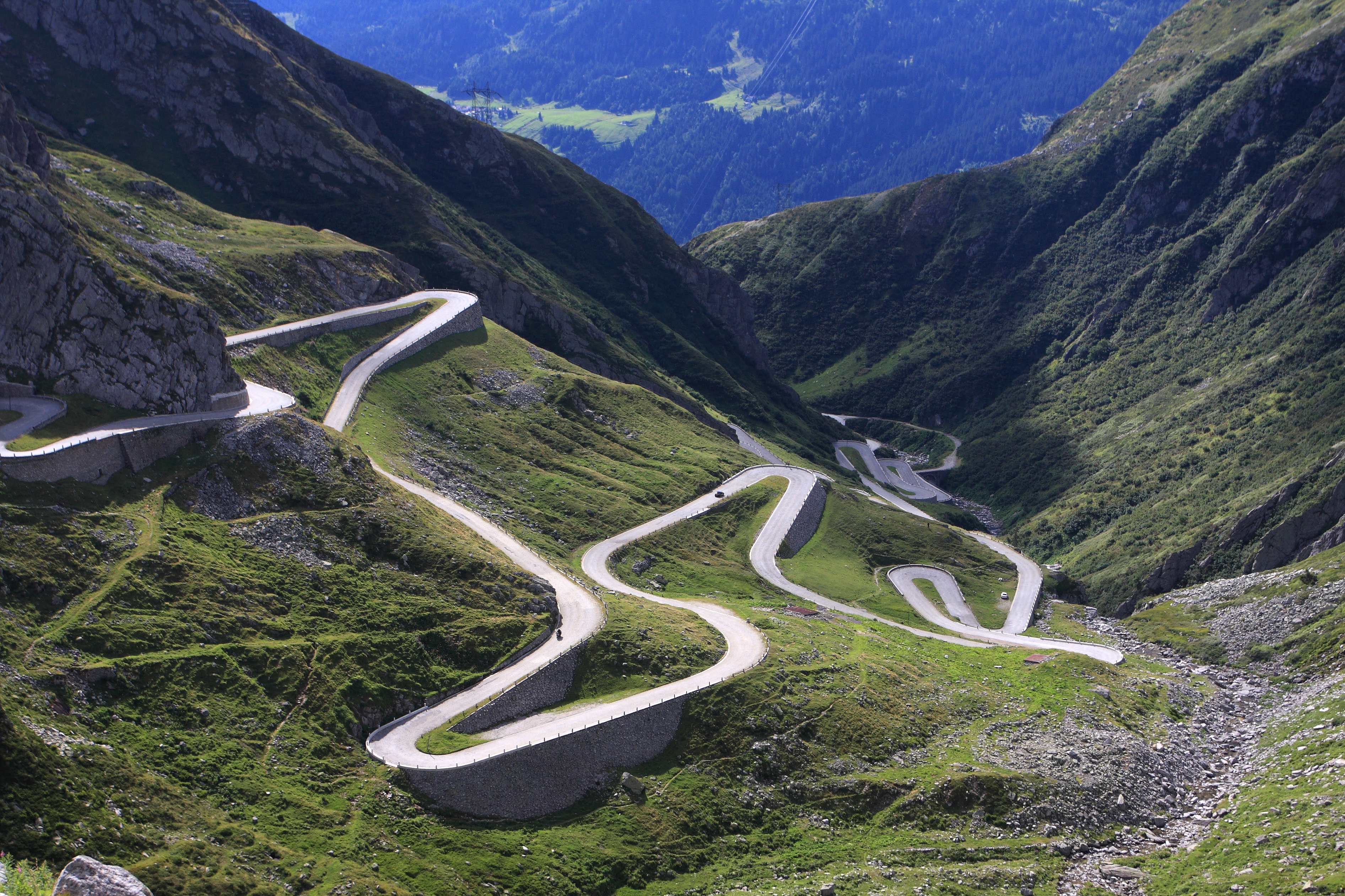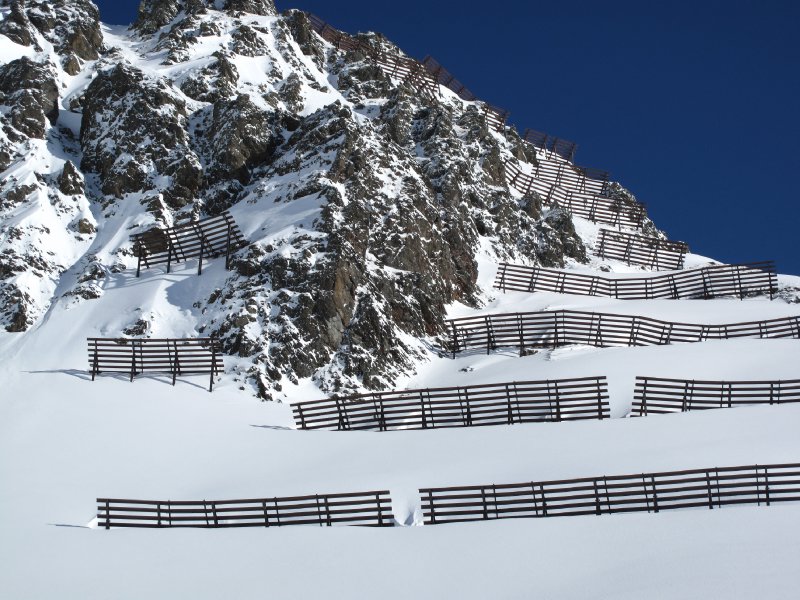The resortified alpine landscape
In addition to the kit of alpine apparatus that curate the mountain at a localised scale, there are also huge infrastructural carvings and stichings of the landscape that have emerged over time.
By the 1970s a network of well established resorts existed in the European Alps. The 9 million tourists who visit the French Alps in the winter season rely on an extensive infrastructure network. The construction of these roads and railways cut scars in the landscape and required deforestation of pine forests on a huge scale, causing the fragmentation of habitats and forcing a layer of human logic onto the terrain, rendering it accessible and easily navigable. These routes are at risk of rock slides and avalanches so protective ‘sheds’ are a common site. These concrete bridging structures provide protection to vulnerable sections of road. The aesthetic effect of this landscape resortification is a strange, patched-up landscape of tarmac and concrete merging with the rock face – a grafted landscape.
![]()
![]() The Flexenpass Tunnel , Switzerland. Carved into the rock face, the tunnel grafts itself into the mountain. [fig]
The Flexenpass Tunnel , Switzerland. Carved into the rock face, the tunnel grafts itself into the mountain. [fig]
![]()
Resortification also refers to the curation of the mountain landscape to create a skiable domain by deforestation and the physical alteration of the terrain itself. Rocky slopes, untouched for thousands of years are manipulated to create the perfect ski run. Once the ski domain has been created, a huge system of physical and logistical systems are required to maintain this pseudo control over nature.
These include permanent, physical additions to the landscape in the form of structures like avalanche barriers above pistes. The metal structures are firmly bolted into rock faces, so that they become merged with the mountain and prevent avalanches burying the pistes below. The abundance of these hybrid mountain sides has turned them into a standard feature – a new aesthetic or texture to add to the palette of the alpine landscape – the modern resortified mountain. The practice of avalanche risk management has even been added to the Unesco Intagible Cultural Heritage List.
![]()
![]()
The addition of human-designed apparatus to the high alpine landscape perhaps demonstrates how much our attitudes towards the mountains has changed. They are a representation of our command and commodification of the Alpine landscape. These peaks, avoided for centuries out of fear, then revered for decades for their awe inpiring beauty, are now littered with interventions of our own making.
Perhaps as a desire to reinstate some form of untamed wilderness to the Alpine regions takes hold, along with rewilding efforts, we will start to see the ruination or dismantling of some of these structures and a post-resort era will start to emerge.
Photos and text by Ness Lafoy, 2020
In addition to the kit of alpine apparatus that curate the mountain at a localised scale, there are also huge infrastructural carvings and stichings of the landscape that have emerged over time.
By the 1970s a network of well established resorts existed in the European Alps. The 9 million tourists who visit the French Alps in the winter season rely on an extensive infrastructure network. The construction of these roads and railways cut scars in the landscape and required deforestation of pine forests on a huge scale, causing the fragmentation of habitats and forcing a layer of human logic onto the terrain, rendering it accessible and easily navigable. These routes are at risk of rock slides and avalanches so protective ‘sheds’ are a common site. These concrete bridging structures provide protection to vulnerable sections of road. The aesthetic effect of this landscape resortification is a strange, patched-up landscape of tarmac and concrete merging with the rock face – a grafted landscape.

The famous St Gotthard / Tremola pass, Switzerland [fig.]

Resortification also refers to the curation of the mountain landscape to create a skiable domain by deforestation and the physical alteration of the terrain itself. Rocky slopes, untouched for thousands of years are manipulated to create the perfect ski run. Once the ski domain has been created, a huge system of physical and logistical systems are required to maintain this pseudo control over nature.
These include permanent, physical additions to the landscape in the form of structures like avalanche barriers above pistes. The metal structures are firmly bolted into rock faces, so that they become merged with the mountain and prevent avalanches burying the pistes below. The abundance of these hybrid mountain sides has turned them into a standard feature – a new aesthetic or texture to add to the palette of the alpine landscape – the modern resortified mountain. The practice of avalanche risk management has even been added to the Unesco Intagible Cultural Heritage List.

Snow barriers at St Gotthard, Switzerland

Snow barriers in Silz, Austria
The addition of human-designed apparatus to the high alpine landscape perhaps demonstrates how much our attitudes towards the mountains has changed. They are a representation of our command and commodification of the Alpine landscape. These peaks, avoided for centuries out of fear, then revered for decades for their awe inpiring beauty, are now littered with interventions of our own making.
Perhaps as a desire to reinstate some form of untamed wilderness to the Alpine regions takes hold, along with rewilding efforts, we will start to see the ruination or dismantling of some of these structures and a post-resort era will start to emerge.
Photos and text by Ness Lafoy, 2020